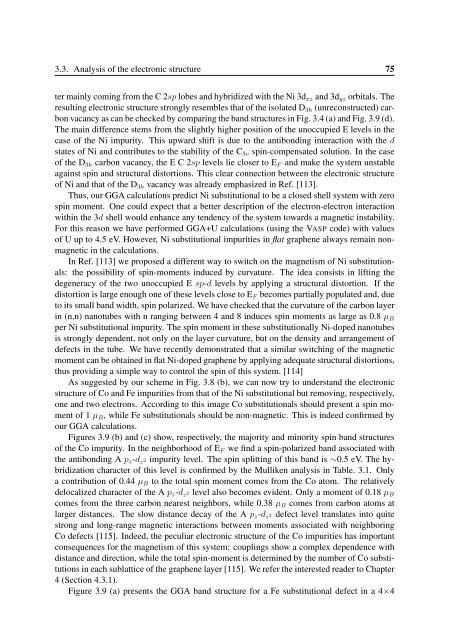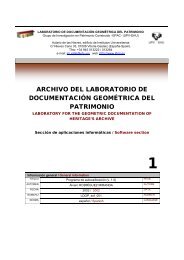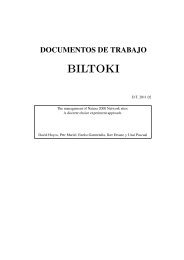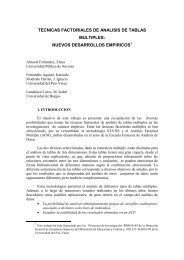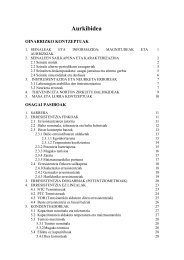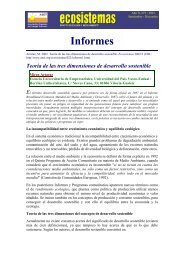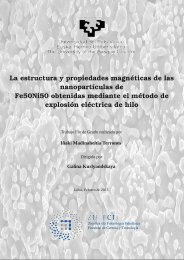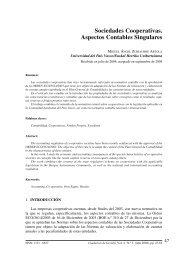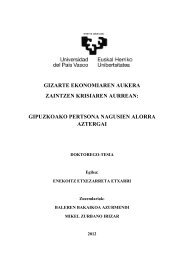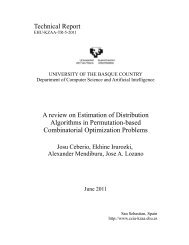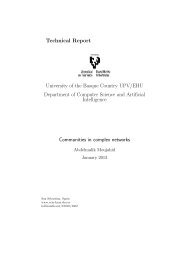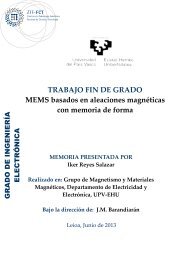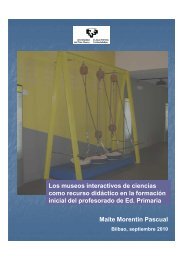Ï - ADDI
Ï - ADDI
Ï - ADDI
- No tags were found...
Create successful ePaper yourself
Turn your PDF publications into a flip-book with our unique Google optimized e-Paper software.
3.3. Analysis of the electronic structure 75ter mainly coming from the C 2sp lobes and hybridized with the Ni 3d xz and 3d yz orbitals. Theresulting electronic structure strongly resembles that of the isolated D 3h (unreconstructed) carbonvacancy as can be checked by comparing the band structures in Fig. 3.4 (a) and Fig. 3.9 (d).The main difference stems from the slightly higher position of the unoccupied E levels in thecase of the Ni impurity. This upward shift is due to the antibonding interaction with the dstates of Ni and contributes to the stability of the C 3v spin-compensated solution. In the caseof the D 3h carbon vacancy, the E C 2sp levels lie closer to E F and make the system unstableagainst spin and structural distortions. This clear connection between the electronic structureof Ni and that of the D 3h vacancy was already emphasized in Ref. [113].Thus, our GGA calculations predict Ni substitutional to be a closed shell system with zerospin moment. One could expect that a better description of the electron-electron interactionwithin the 3d shell would enhance any tendency of the system towards a magnetic instability.For this reason we have performed GGA+U calculations (using the VASP code) with valuesof U up to 4.5 eV. However, Ni substitutional impurities in flat graphene always remain nonmagneticin the calculations.In Ref. [113] we proposed a different way to switch on the magnetism of Ni substitutionals:the possibility of spin-moments induced by curvature. The idea consists in lifting thedegeneracy of the two unoccupied E sp-d levels by applying a structural distortion. If thedistortion is large enough one of these levels close to E F becomes partially populated and, dueto its small band width, spin polarized. We have checked that the curvature of the carbon layerin (n,n) nanotubes with n ranging between 4 and 8 induces spin moments as large as 0.8 µ Bper Ni substitutional impurity. The spin moment in these substitutionally Ni-doped nanotubesis strongly dependent, not only on the layer curvature, but on the density and arrangement ofdefects in the tube. We have recently demonstrated that a similar switching of the magneticmoment can be obtained in flat Ni-doped graphene by applying adequate structural distortions,thus providing a simple way to control the spin of this system. [114]As suggested by our scheme in Fig. 3.8 (b), we can now try to understand the electronicstructure of Co and Fe impurities from that of the Ni substitutional but removing, respectively,one and two electrons. According to this image Co substitutionals should present a spin momentof 1 µ B , while Fe substitutionals should be non-magnetic. This is indeed confirmed byour GGA calculations.Figures 3.9 (b) and (c) show, respectively, the majority and minority spin band structuresof the Co impurity. In the neighborhood of E F we find a spin-polarized band associated withthe antibonding A p z -d z 2 impurity level. The spin splitting of this band is ∼0.5 eV. The hybridizationcharacter of this level is confirmed by the Mulliken analysis in Table. 3.1. Onlya contribution of 0.44 µ B to the total spin moment comes from the Co atom. The relativelydelocalized character of the A p z -d z 2 level also becomes evident. Only a moment of 0.18 µ Bcomes from the three carbon nearest neighbors, while 0.38 µ B comes from carbon atoms atlarger distances. The slow distance decay of the A p z -d z 2 defect level translates into quitestrong and long-range magnetic interactions between moments associated with neighboringCo defects [115]. Indeed, the peculiar electronic structure of the Co impurities has importantconsequences for the magnetism of this system: couplings show a complex dependence withdistance and direction, while the total spin-moment is determined by the number of Co substitutionsin each sublattice of the graphene layer [115]. We refer the interested reader to Chapter4 (Section 4.3.1).Figure 3.9 (a) presents the GGA band structure for a Fe substitutional defect in a 4×4


